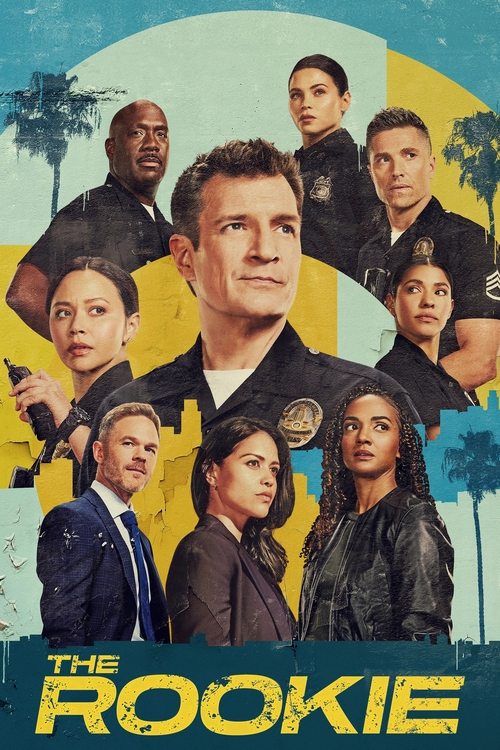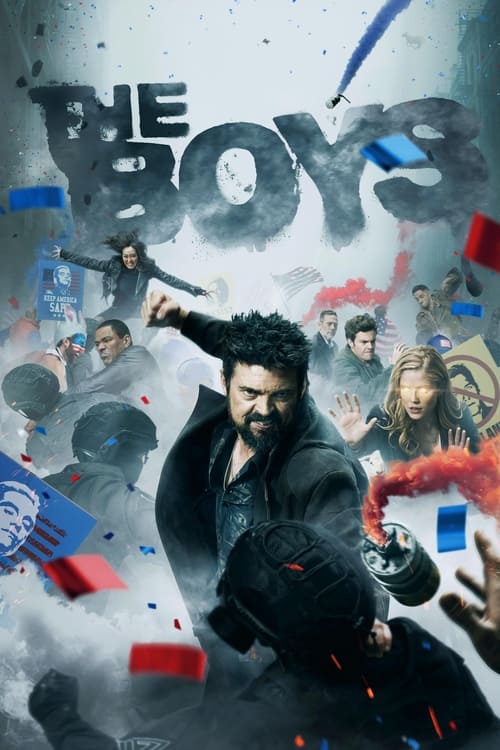
Ask Your Own Question
What is the plot?
In the opening scene of "Episode 3," the camera pans over a bustling city as the sun rises, casting a warm glow on the streets. We see Officer Tanaka and Officer Lee arriving at the precinct, exchanging light banter about their plans for the weekend. Their camaraderie sets a light-hearted tone, but it quickly shifts as they receive a call about a robbery in progress at a local jewelry store.
The scene transitions to the jewelry store, where a masked robber is seen threatening the store owner with a gun. The tension escalates as the robber demands cash and jewelry, his voice shaky but aggressive. The store owner, visibly terrified, complies, handing over items while trying to remain calm. Just as the robber is about to flee, the sound of police sirens blares outside, causing panic. The robber makes a hasty exit, and the officers arrive on the scene moments later.
Officer Tanaka and Officer Lee quickly assess the situation, interviewing the shaken store owner and gathering descriptions of the robber. They learn that the suspect fled on foot towards a nearby alley. The officers split up, with Tanaka pursuing the suspect while Lee secures the area and calls for backup. The chase through the alley is intense, with Tanaka navigating obstacles and calling out for the suspect to stop. The robber, however, is agile and manages to evade capture, disappearing into the maze of backstreets.
Back at the precinct, the officers regroup to discuss their next steps. They analyze the security footage from the jewelry store, which reveals a partial license plate number from a getaway vehicle. This leads them to a nearby parking lot where they find the car abandoned. Inside, they discover personal items that hint at the robber's identity, including a wallet with an ID. The officers realize they are dealing with a repeat offender, known for similar crimes in the area.
As they dig deeper, Tanaka and Lee learn that the suspect has a history of violence and is currently on parole. They decide to pay a visit to the suspect's last known address, hoping to catch him off guard. The atmosphere is tense as they approach the rundown apartment building, and they exchange worried glances, aware of the potential danger. They knock on the door, but there is no answer. After a moment of hesitation, they decide to enter, using their badges to justify their actions.
Inside the apartment, the officers find it in disarray, with signs of a struggle. They search the premises, and Tanaka discovers a hidden compartment in a closet containing stolen jewelry. Just then, they hear a noise from the bathroom. They cautiously approach, weapons drawn, and find the suspect attempting to escape through a window. A confrontation ensues, with the suspect becoming aggressive. Tanaka and Lee work together to subdue him, using their training to safely apprehend him without further violence.
With the suspect in custody, the officers return to the precinct, where they are met with praise from their superiors. However, the victory is bittersweet for Tanaka, who reflects on the cycle of crime and the challenges of their job. The episode concludes with a scene of the officers sharing a quiet moment in the precinct, contemplating the day's events and the impact of their work on the community.
What is the ending?
In the ending of "Open Up, Police!", Season 1, Episode 3, the main characters confront the consequences of their actions throughout the episode. The tension culminates in a dramatic standoff, leading to a resolution that forces each character to face their personal demons and the impact of their choices. The episode concludes with a sense of unresolved tension, leaving the characters at a crossroads.
As the episode nears its conclusion, the scene shifts to a dimly lit interrogation room where Officer Tanaka sits across from a suspect, his brow furrowed with determination. The air is thick with tension as Tanaka presses for answers, his voice steady but laced with urgency. The suspect, a young man with a defiant glare, shifts uncomfortably in his seat, revealing the internal struggle he faces. Tanaka's motivation is clear; he seeks justice not just for the case at hand but also as a means to redeem himself after a series of personal failures.
Meanwhile, outside the precinct, Officer Lee grapples with her own emotional turmoil. She stands by her car, staring into the distance, reflecting on her choices and the weight of her responsibilities. The camera captures the flicker of doubt in her eyes, showcasing her internal conflict. She knows that her decisions have far-reaching consequences, not just for herself but for her colleagues and the community they serve.
Back in the interrogation room, the tension escalates as Tanaka's persistence begins to crack the suspect's facade. The young man finally breaks down, revealing the truth behind his actions. This moment is pivotal, as it highlights the theme of vulnerability and the importance of understanding the human condition. Tanaka's expression softens, revealing a glimpse of empathy as he realizes that the suspect is not just a criminal but a product of his environment.
Simultaneously, Officer Lee receives a call that pulls her back into the fray. She rushes back to the precinct, her heart racing as she prepares for the impending confrontation. The urgency of the situation is palpable, and the stakes are high. As she arrives, she finds Tanaka in the midst of a breakthrough, and the two officers exchange a knowing glance, a silent acknowledgment of their shared struggles.
The climax unfolds as the precinct is put on high alert due to a potential threat linked to the case. Officers scramble to secure the area, and the atmosphere is charged with adrenaline. Lee and Tanaka work in tandem, showcasing their growth as partners. They confront the suspect together, and in a tense standoff, they manage to de-escalate the situation without further violence. This moment serves as a testament to their development, highlighting the importance of teamwork and communication in law enforcement.
As the episode draws to a close, the characters reflect on the events that transpired. Tanaka stands outside the precinct, looking up at the night sky, contemplating the choices he has made and the path ahead. Lee joins him, and they share a moment of camaraderie, acknowledging the challenges they face as officers and as individuals. The episode ends on a note of uncertainty, with both characters aware that their journey is far from over, but they are now more equipped to face whatever comes next.
In summary, the ending of "Open Up, Police!" Season 1, Episode 3, encapsulates the struggles of the main characters, their growth through adversity, and the ongoing challenges they must navigate in their personal and professional lives. Each character is left at a pivotal moment, poised for further development in the episodes to come.
Is there a post-credit scene?
In "Episode 3" of "Open Up, Police!", there is no post-credit scene. The episode concludes without any additional content after the credits roll, focusing instead on wrapping up the main storyline and character arcs presented throughout the episode. The narrative ends on a note that leaves the audience reflecting on the events that transpired, but there are no further scenes or teasers provided after the credits.
What key event triggers the investigation in Episode 3?
In Episode 3, the investigation is triggered by the discovery of a body in a local park, which raises immediate concerns about a potential serial killer in the area.
How does Officer Tanaka's personal life affect his work in this episode?
Officer Tanaka struggles with the recent loss of a family member, which clouds his judgment and leads to tension with his partner as he becomes overly invested in the case.
What role does Detective Lee play in unraveling the mystery?
Detective Lee takes the lead in interviewing witnesses and analyzing evidence, showcasing her sharp instincts and determination to solve the case, which ultimately helps to uncover crucial information.
How does the community react to the events of Episode 3?
The community is gripped by fear and anxiety following the murder, leading to increased tensions and a town hall meeting where residents express their concerns and demand action from the police.
What conflict arises between the police department and the media in this episode?
The police department faces pressure from the media, which is eager for sensational stories, leading to a conflict where officers must balance transparency with the need to protect the integrity of the investigation.
Is this family friendly?
"Open Up, Police!" Season 1, Episode 3 contains several elements that may be considered objectionable or upsetting for children or sensitive viewers.
-
Violence and Crime: The episode revolves around police work, which may include depictions of crime scenes, discussions of violent incidents, or confrontations that could be intense or distressing.
-
Emotional Turmoil: Characters may experience significant emotional distress, including fear, anger, or sadness, particularly in relation to the crimes being investigated. This could be unsettling for younger viewers.
-
Mature Themes: The narrative may touch on themes such as loss, betrayal, or moral dilemmas, which could be complex and difficult for children to fully understand.
-
Language: There may be instances of strong language or adult conversations that could be inappropriate for younger audiences.
-
Realistic Portrayal of Law Enforcement: The show aims for a realistic depiction of police work, which might include gritty or harsh realities of crime that could be alarming.
These aspects may require parental discretion when considering the suitability of the episode for younger viewers.










